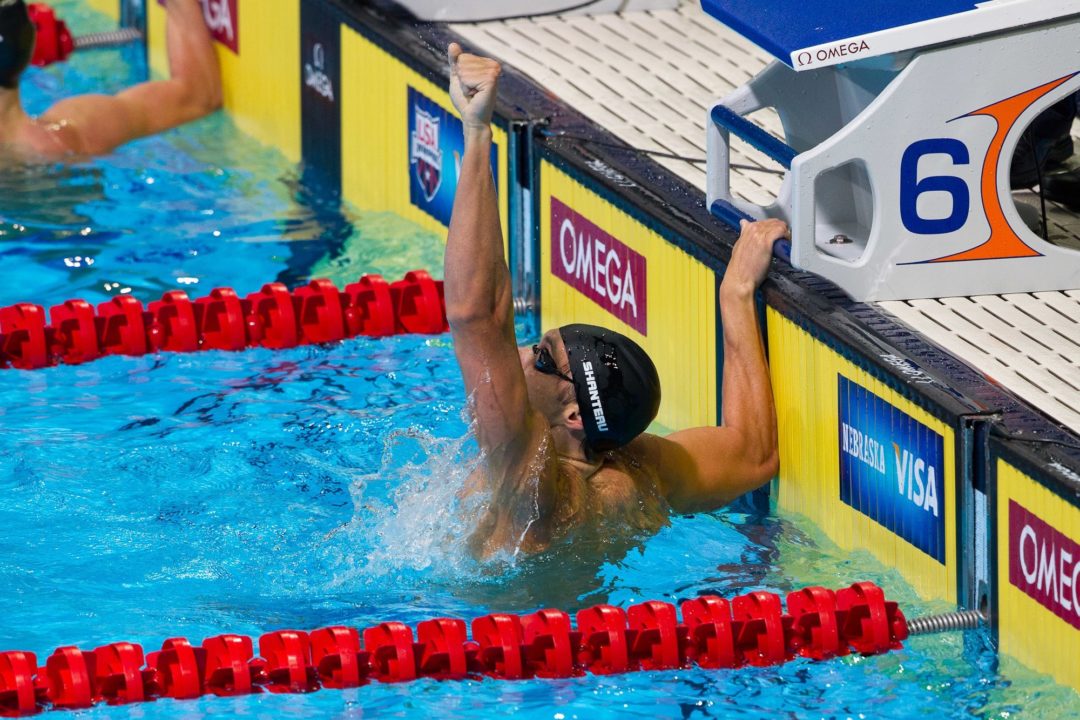Olivier Poirier-Leroy is a former national level swimmer. In feeding his passion for swimming, he has developed YourSwimBook, a powerful logbook and goal setting guide made specifically for swimmers. Sign up for the YourSwimBook newsletter (free) and get weekly motivational tips by clicking here.
One of the most effective (and cheapest) tools available to swimmers is keeping a swim log. For the five minutes that it takes to record a workout, the athlete reaps a metric butt-ton of rewards; not the least of which include inspiration and a jolt of motivation. Additionally, each swim log is invariably unique to each user depending on the OCD level of the athlete.
Here are 8 reasons you should be recording your workouts with a swim log–
Logging your workouts is therapeutic. It’s hard to pinpoint into words that little surge of pride that occurs when you take a few moments to relive your workout on paper. Equal doses of satisfaction and pride, usually followed by a jolt of excitement for the results that are still to come. Jotting down how you performed is a nice little piece of closure after a workout.
Provides a moment for some objective reflection. Reliving your practice and which sets you performed well on provides you an opportunity to reflect more objectively on the sets from that day. It may help you make more sense of the set in its aftermath, providing a better understanding of what the objective was for the set.
Gives you a better understanding of how you progress. If I don’t know any better, I set ridiculous goals. (“I’m going to own all of the water slides in the world. And drive an aircraft carrier to high school.” — Me, circa 6 years old.) Having a logbook, and seeing on paper how long it takes for my body to adjust to training, how quickly (or slowly) I become conditioned, helps give me a realistic framework of how quickly I can expect to see results. Being blind to practice results and rate of progression, and willfully ignoring them sets you up to creating unrealistic goals as you quite simply don’t know any better. You have no compass for how quickly or slowly you progress. This leads to unrealistic goals, which results in a demoralized athlete when he or she doesn’t see the results they feel they should expect.
Inspiration comes in reflecting on the journey. Flipping back through the pages of your log should instill pride and confidence in you. Seeing all of the work, all of the workouts where you put in work, all of those monstrous sets you conquered, should fill you with a swelling sense of pride and confidence, furthering you along your journey towards your goals.
The desire to record positive results will motivate you in practice. In the moments where your motivation sags during practice, where you just don’t feel that super-duper, and you are thinking about being quite literally anywhere else on the earth besides staring at that black line, the notion you will have to record this workout later will show up in a last-ditch effort to save your practice. There are numerous times that the thought of having to write out a crappy set saved me from actually having one (legendary distance swimmer Janet Evans talks about this curious little effect on p. 58 in her book “Total Swimming”).
Gives you an elevating set of targets to aim at. Having your test set results on paper, and right in front of you eliminates any confusion the next time that test set shows it’s face again. Having those numbers in front of you provides you a specific standard to chase and surpass. Knowing the exact times you did last time gives you a goal other than just surviving the interval.
Detect patterns. Out of the pool stuff has a major impact on our performance; this you should already know. But it is challenging to view the cause-and-effect of certain things without consistently monitoring factors such as sleep, stress levels, diet, and mood. How many times have you shown up at practice, feeling lethargic, and not having a precise explanation for why you felt so off? Looking back on things like stress, sleep, and even hydration can help find cause for those sporadic dips in energy and motivation, and ideally, help to ward them off in the future so that you can stay in peak performance state.
Gives you a hub for your swimming goals. As mentioned above, tracking your day-to-day results in the pool can help you create better goals. Your swim log can also help you plan your daily, weekly, and season-long goals.
Here are a couple of examples:
Workout Goals: Breathing bilaterally for the entire workout. Stretch for 20 minutes post-workout.
Weekly/Monthly Goals: Do 300 abs before each workout. Warm down an extra 400m each night. Make it to bed by 10:30pm every night.
Season Goals: Break 55 for the 100 butterfly. Qualify for World Juniors squad.
Your swim log gives you not only a place to write down and reflect on your workouts (and competitions), but it also serves as an effective planning tool for your swimming goals.
About YourSwimBook
 YourSwimBook is a logbook and goal setting guide designed specifically for competitive swimmers.
YourSwimBook is a logbook and goal setting guide designed specifically for competitive swimmers.
It includes a ten-month log book, a comprehensive goal setting section, monthly evaluations to be filled out with your coach, and more.
Learn 8 more reasons how this tool kicks butt.
Team and group discounts are available for clubs. Fill out a request for a complimentary estimate by clicking here.

Log books are a lost art amongst many swimming groups. And the swimmer is the loser. They are an invaluable personal support system which also enable a whole different level of communication between swimmer and coach.
Training logs also come in very handy when you become a coach later in life.
I still have my swim log book from high school and that was 30 years ago. Fun to go back and thumb thru.